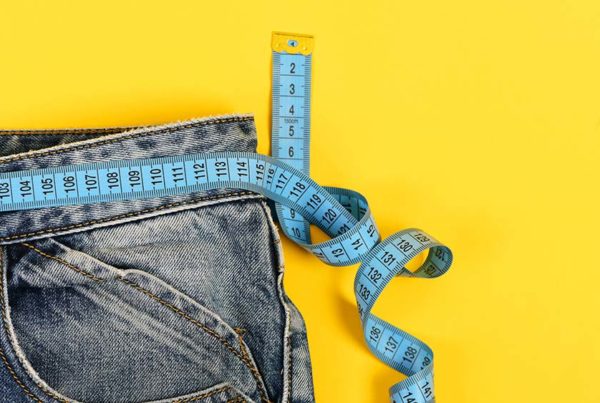
For most people, high blood pressure can be prevented and treated successfully through simple lifestyle modification, which, unlike drugs, has no side effects, is inexpensive, and improves overall health.
New definitions of hypertension, or high blood pressure, have just been released by the American College of Cardiology and the American Heart Association. Overnight, millions of people who thought they had “normal” blood pressure will now be told they have hypertension.
In real terms, the new guidelines add an additional 15 million people age 45-75, more than half of all people in this age group. In total, it’s believed more than 100 million American’s now have high blood pressure.
Unfortunately too many of these new hypertensives will be issued pharmaceutical drugs for their condition — a boon to drug companies — while many more will be encouraged to make ineffective and counterproductive lifestyle changes like adopting a high-carb, low-fat diet and high-intensity exercise routines.
Previously, hypertension was defined as blood pressures above 140/90 (the first number is the systolic pressure, and the second diastolic as measured in millimeters of mercury or mm Hg). The new guidelines define hypertension as 130/80.
Over the past decade, research has shown even the once “normal” blood pressure of 120/80, and certainly numbers above that, may be associated with increased risk of cardiovascular disease, including stroke, in susceptible individuals. Reducing it in a healthy way can improve overall health in other ways as well, such as reducing excess body fat. However, this does not mean people classified as having prehypertension should automatically be on medication — lifestyle modification should be the first line of preventing and treating elevated blood pressure.
Blood pressure is literally the force of blood pushing against the walls of the arteries as the heart pumps blood. This pressure is always changing. It lowers during sleep and relaxation, and rises when you’re awake, stressed and excited. It even changes slightly from minute-to-minute to compensate with the body’s need for increased or decreased blood supply. Systolic pressure can normally vary 10-15 mm Hg, with diastolic ranges of 5-10. Lowering blood pressure too much can impair health, especially for the brain.
The people most at risk from high blood pressure are those with heart or kidney disease, diabetes, and the risk of stroke, and those who are overfat. Hypertension is also a risk factor for overall mortality. Those who are overfat — upwards of 90 percent in developed countries with rising rates in developing countries (e.g. 80 percent in India) — often have hypertension.
The new figures do not include children (a growing problem), or those in other age categories. Rates in other countries are similar. For example, in China, 267 million individuals in the 45-75 age group would be labeled as hypertensive. The new guidelines increase the prevalence of hypertension by about 27 percent in the U.S. and 45 percent in China.
The key cause of the problem in most people worldwide is poor dietary habits, something that is easily corrected without drugs.
Treat the Cause
Addressing the real cause of hypertension is a key consideration: Most of those with high blood pressure may also be overfat. The majority are also carbohydrate intolerant or (insulin resistant). This vicious cycle begins with excess body fat that leads to CI triggering elevated blood pressure. Rising insulin levels can parallel elevations in blood pressure.
Lifestyle changes to address the cause of hypertension begin with reducing excess body fat by eliminating sugar and other refined carbohydrates (aka junk food). Those on medication for high blood pressure must be careful during this process to monitor pressures, which can drop quickly once the problem is eliminated.
During the Two-Week Test, for example, it is recommended that, if your blood pressure is high, have it evaluated before, during and after the test. That’s because for many people, significantly reducing refined carbohydrates and sugars, which reduces insulin levels, will lower blood pressure — often dramatically. As a result, if you’re taking medication to control blood pressure, your doctor may need to reduce, or even eliminate it.
The vast majority of hypertensive patients I initially saw in practice were able to reduce their blood pressure significantly just by strictly avoiding sugar and other refined carbohydrates and sugars. Most of these patients were able to eliminate their medication.
Other causes of hypertension include stress, poor aerobic capacity, nutrition as mentioned below, although these may be secondary to being overfat:
- Stress. An example of stress raising blood pressure is the condition called “white coat hypertension,” where the stress of a visit to the doctor’s office causes an elevation in blood pressure. This can result in a typical blood pressure of, say, 120/80, to jump to 136/88. In such cases, blood pressure should be checked several times during your visit, where it often measures lower numbers over time if stress levels are reduced.
- Poor aerobic conditioning. Aerobic exercise is an important factor in both prevention and treatment of hypertension. Even one easy aerobic workout can reduce blood pressure for up to 24 hours. Anaerobic exercise may not be nearly as effective and could even aggravate high blood pressure. It’s important to discuss your particular exercise needs with a healthcare professional — especially one who is aware of the potential benefits of food, nutrition and exercise.
- Nutritional considerations. When certain nutrients are low, such as calcium and vitamins A and C, the blood pressure may elevate. Eating sufficient amounts of plant foods including vegetables, nuts, seeds, berries and other healthy foods can also help normalize blood pressure.
Blood pressure tends to rise with age. Vessels are not as functional and less blood may circulate throughout the body, especially the brain. The body compensates for this by increasing blood pressure. The aging brain may require higher blood pressures to maintain good brain function. So the new guidelines may be less appropriate for older individuals as both hyper- and hypotension can impair brain function. Taking meds to reduce blood pressure can also reduce cognitive function due to cortical atrophy, sometimes is misinterpreted as “normal” aging.
Hypertension is not normal, and indicates something is wrong, often with lifestyle and typically with diet. Eliminating junk food may be the best place to start.
Hypotension — Low Blood Pressure
Hypotension is abnormal and unhealthy. It results in less blood getting to the heart, brain, intestine, muscles, and virtually all the body’s cells. Low blood pressure is considered below 90/60 mm Hg, but many individuals have signs and symptoms when systolic pressure falls under 100.
Hypotension can cause muscle weakness, sleepiness, fatigue, and dizziness, and even fainting. In severe cases, low-blood pressure can cause blurry vision and confusion, and be life-threatening.
Hypotension could be caused by various drugs, including alcohol, antidepressants and anti-anxiety medications, painkillers, and even meds given for hypertension. In addition, dehydration, diabetes, and certain heart problems like arrhythmias can cause low blood pressure.
One specific type of low blood pressure is orthostatic hypotension. It occurs following a sudden change in body position, most often from lying down to standing, although sometimes sitting up after lying down, or just bending over to pick something off the floor while standing can trigger it. Symptoms include dizziness and lightheadedness that usually lasts only a few seconds. Technically, orthostatic hypotension occurs with a pressure drop of 20 mm Hg or more, but many patients get symptoms with much less of a drop in blood pressure. (Postural hypotension can also occur after eating and is called postprandial orthostatic hypotension.)
An imbalance in the autonomic nervous system, often associated with poor adrenal function can also contribute to orthostatic hypotension. Treatment involves finding the cause and eliminating it, with carbohydrate intolerance a common cause.
Following exercise of various intensity and duration, there is typically a normal drop in blood pressure into the lower ranges of normal. This post-exercise hypotension is defined as a pressure that is lower than the pre-exercise value, and can persists for minutes or hours after an exercise session. This phenomenon is one of the reasons exercise can help reduce hypertension.
A grain of salt
A common notion about high blood pressure is that sodium causes it. In some people with existing high blood pressure, too much dietary sodium can magnify the problem. And that amount is very individual. About 30 to 40 percent of those with hypertension may be sodium-sensitive. For these individuals, even moderate amounts of sodium can increase their blood pressure further. Obviously, these patients should regulate their sodium intake, which is most easily done by avoiding packaged and processed foods and maintaining a diet high in fresh fruits and vegetables, and other natural foods. In many cases, reducing excess body fat can reduce or eliminate sodium sensitivity.
But salt modification for those who have normal blood pressure is not necessary, as sodium will not raise blood pressure in healthy individuals.
Like calcium, magnesium and other minerals, sodium is a nutrient essential for good health. Contrary to the common assumption, Many studies have not shown that sodium causes hypertension.








